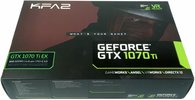 The Galax GeForce GTX 1070 Ti EX, which is sold in Europe under the BRAND KFA2 for trademark reasons, is now one of the cheapest – if not the cheapest – GeForce GTX 1070 Ti on the German market.
The Galax GeForce GTX 1070 Ti EX, which is sold in Europe under the BRAND KFA2 for trademark reasons, is now one of the cheapest – if not the cheapest – GeForce GTX 1070 Ti on the German market.
This, of course, arouses our particular interest, because we are already curious whether and what concessions one may have to accept – or not.
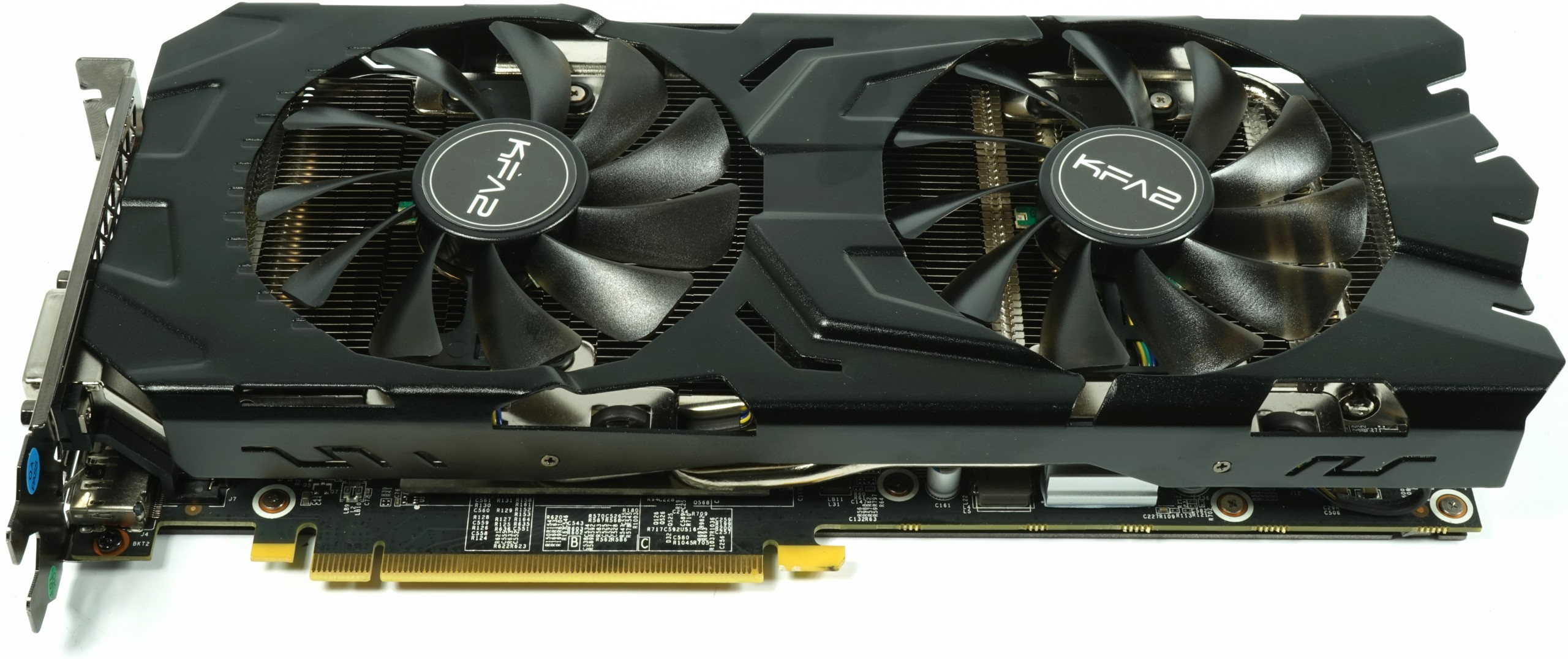
The German distributor HMC, which usually also sells the more expensive versions in the form of the “Hall of Fame” editions (HoF), deliberately positions this card around the lower end of the price scale, although at first glance it is hard to see where the savings were actually saved. Because there is one thing we can spoil here: depending on the GPU quality, you don’t have to hide behind the significantly more expensive competitors in terms of performance, on the contrary.
Since the actual performance of all board partner cards of the GeForce GTX 1070 Ti ex works has to be very similar due to the fixed base and boost offset for all manufacturers, the real achieved results depend more on the actual achieved in practice. Boost cycle, and thus indirectly from the cooling and primarily also the quality of the respective chip.
Each test based on benchmark bars is therefore only a random snapshot of a single specimen. This is precisely why we have focused on the actual technical implementation of each model and have been able to document this very well with our equipment.
Within the necessary tolerance ranges, it is definitely NOT possible that the performance of a particular card could be preceded by all others. We have therefore no longer used a manufacturer’s name for the benchmarks, because according to chip quality, any card from any manufacturer can tend to the lower or upper performance limit.
Unboxing, dimensions and connections
The accessories are limited to the usual three-handed as DVD and manual. We will discuss the exact board and cooling design separately later. The most important features are first summarized in a table:
| Overview of installation dimensions, features and connections | |
|---|---|
| Installation length: |
28.4 cm (slot aperture to end cover) |
| Installation height: |
12.5 cm (upper edge slot to top card) |
| Depth: |
3.5 cm (2-slot) 0.5 cm baking plate |
| Weight: |
839 grams |
| Backplate: | Yes, with cooling function |
| Cooling: | Air Horizontally aligned cooling fins |
| Fan: |
2x 9.2 cm fan modules 10 rotor blades semi-passive lyrised |
| Connections Slot blend: |
3x DisplayPort 1.4 1x HDMI 2.0 1x Dual-Link DVI-I |
| Other connections: |
2x SLI Connector |
| Power supply: |
8-Pin + 6-Pin PCI-Express |
Exterior views
The radiator cover is made of matt black lacquered light metal, which surprises us positively due to the low entry price. After the unboxing, the first optical and haptic impression is completely fine, there is no trace of excessive cost-down.
With its 839 grams, the card is not a real heavyweight, which of course suits the installation. The length of 28.4 cm is also still fine. The actual card would also have been loose with 27 cm if the designers had not put on the upper cover nor an optical set of tail feathers, which is actually completely superfluous and only unnecessarily extends the card. The height of 12.5 cm is average and the installation depth of 3.5 cm is typical for a dual slot design.
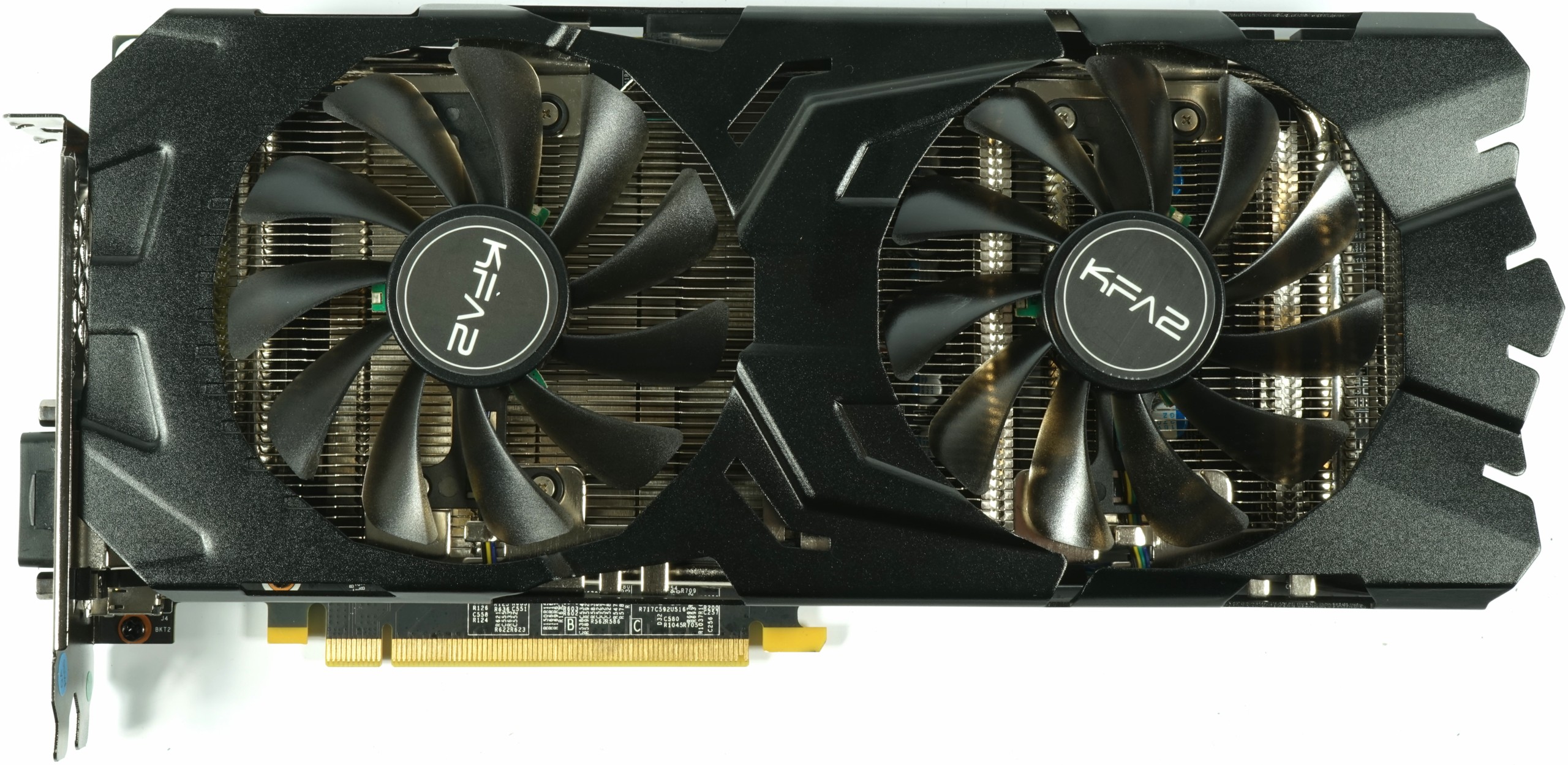 |
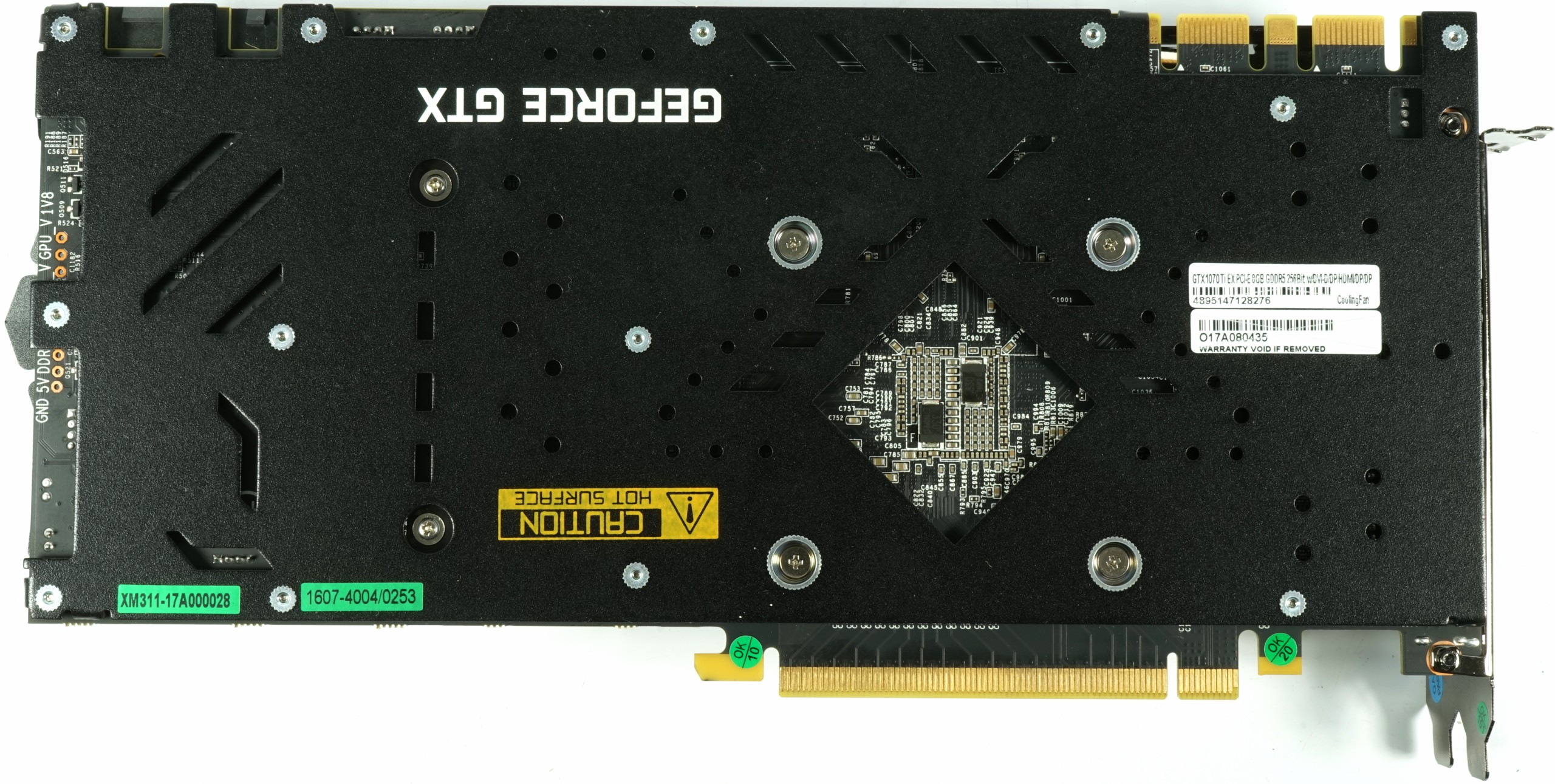 |
The back of the board is covered by a one-piece, blackened aluminium backplate, which has various ventilation slots and openings. This backplate requires at least another five millimetres of depth on the back, which could be important for multi-GPU systems.

The top of the card has a “GeForce GTX” lettering with LED backlight, as well as an 8-pin and a 6-pin PCIe power supply connector at the end of the graphics card.

The end of the map, like its underside, shows that the slats are horizontally aligned and thus the air flow towards the end of the map or Slot aperture goes. The advantage of this action is obvious, because despite the axial fan construction, a not inconsiderable proportion of the waste heat is also disposed of directly to the environment via the slot aperture and the motherboard is also noticeably thermally relieved.

The slot aperture offers a total of five outputs, of which a maximum of four can be operated together (multi-monitor setup). In addition to the dual-link DVI-D (no analog signal looped through!), there is an HDMI 2.0 output and three DisplayPort 1.4 ports on the back. The rest of the slot aperture is provided with some openings for the air outlet.

Specifications
Since the ex-factory specifications must be the same for all GeForce GTX 1070 Ti, the following table applies equally to all cards:
| Gpu |
GeForce GTX 1080 (GP104) |
GeForce GTX 1070 Ti (GP104) | GeForce GTX 1070 (GP104) |
|---|---|---|---|
| Sms |
20 | 19 |
15 |
| CUDA Cores |
2560 | 2432 |
1920 |
| Base Clock |
1607 MHz |
1607 MHz |
1506 MHz |
| GPU Boost Clock |
1733 MHz | 1683 MHz |
1683 MHz |
| GFLOPs (Base Clock) |
8228 | 7816 |
5783 |
| Texture Units |
160 | 152 |
120 |
| Texel Fill Rate |
277.3 GT/s | 244.3 GT/s |
201.9 GT/s |
| Memory Data Rate |
10 Gb/s | 8 Gb/s |
8 Gb/s |
| Memory Bandwidth |
320 GB/s | 256 GB/s |
256 GB/s |
| Rops |
64 | 64 |
64 |
| L2 Cache |
2MB | 2MB |
2MB |
| Tdp |
180w |
180w |
150w |
| Transistor |
7.2 billion | 7.2 billion |
7.2 billion |
| The Size |
314 mm2 | 314 mm2 | 314 mm2 |
| Process Node |
16nm | 16nm | 16nm |
Test system and measurement methods
The new test system and the methodology have already been described in great detail in the basic article “How We Test Graphics Cards” (English: “How We Test Graphics Cards”) and therefore, for the sake of simplicity, we now only refer to this detailed Description. So if you want to read everything again, you are welcome to do so. However, we have improved CPU and cooling once again in order to largely exclude possible CPU bottle necks for this fast card.
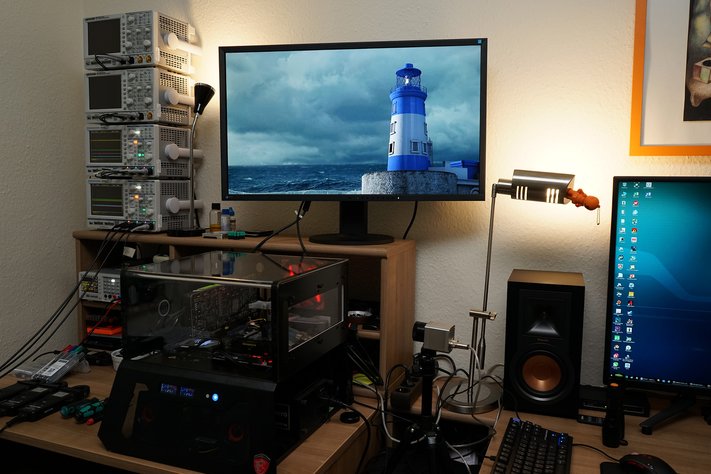
If you are interested, the summary in table form quickly provides a brief overview:
| Test systems and measuring rooms | |
|---|---|
| Hardware: |
Intel Core i7-6900K -4.3GHz MSI X99S XPower Gaming Titanium Corsair Vengeance DDR4-3200 1x 1 TByte Toshiba OCZ RD400 (M.2, System SSD) 2x 960 GByte Toshiba OCZ TR150 (Storage, Images) Be Quiet Dark Power Pro 11, 850-watt power supply Windows 10 Pro (all updates) |
| Cooling: |
Alphacool Ice Block XPX Alphacool Ice Age 2000 Chiller 2x Be Quiet! Silent Wings 3 PWM (Closed Case Simulation) Thermal Grizzly Kryonaut (for cooler change) |
| Housing: |
Lian Li PC-T70 with expansion kit and modifications Modes: Open Benchtable, Closed Case |
| Monitor: | Eizo EV3237-BK |
| Power consumption: |
non-contact DC measurement on the PCIe slot (Riser-Card) non-contact DC measurement on the external PCIe power supply Direct voltage measurement on the respective feeders and on the power supply 2x Rohde & Schwarz HMO 3054, 500 MHz multi-channel oscillograph with memory function 4x Rohde & Schwarz HZO50, current togor adapter (1 mA to 30 A, 100 KHz, DC) 4x Rohde & Schwarz HZ355, touch divider (10:1, 500 MHz) 1x Rohde & Schwarz HMC 8012, digital multimeter with storage function |
| Thermography: |
Optris PI640, infrared camera PI Connect evaluation software with profiles |
| Acoustics: |
NTI Audio M2211 (with calibration file) Steinberg UR12 (with phantom power for the microphones) Creative X7, Smaart v.7 own low-reflection measuring room, 3.5 x 1.8 x 2.2 m (LxTxH) Axial measurements, perpendicular to the center of the sound source(s), measuring distance 50 cm Noise in dBA (Slow) as RTA measurement Frequency spectrum as a graph |
































Kommentieren